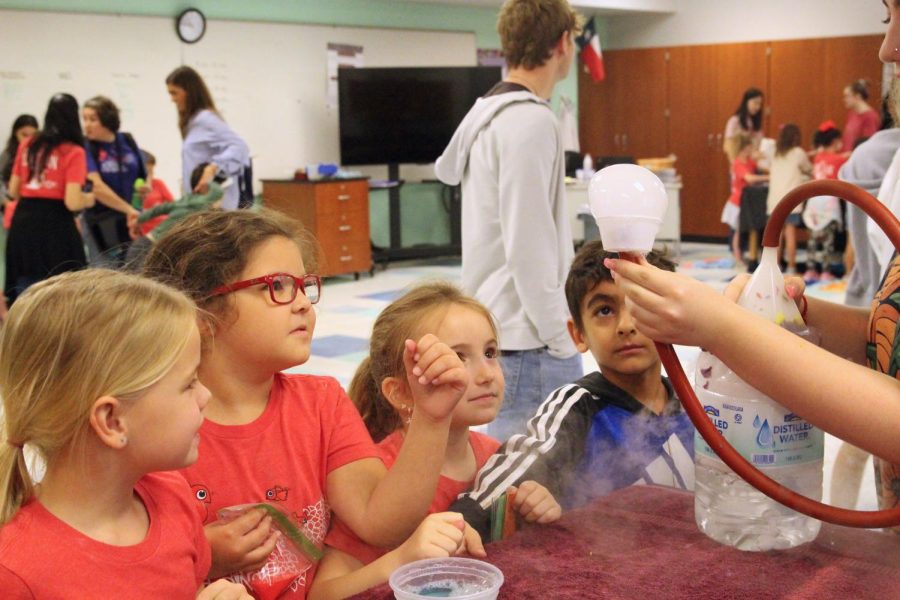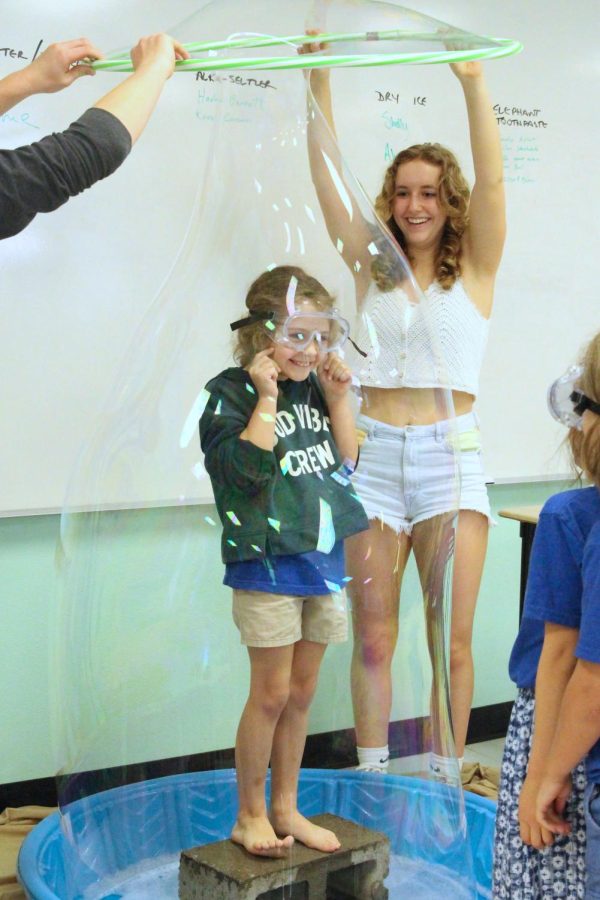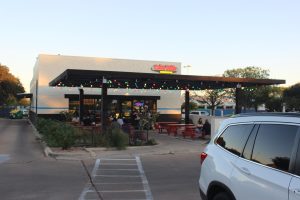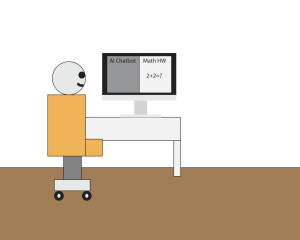Students volunteer for Science Day
Student volunteers capture young minds as they share striking scientific shows at elementary schools
DRY ICE SPHERE: First graders gather around a bubble made of dry ice and carbon dioxide, held by a student volunteer. The carbon dioxide reacts with the dry ice through the hose, forming a sphere at the end. “The kids loved the dry ice bubble, they thought it was so cool. It is very rewarding to see them love something the department worked so hard to set up,” sophomore Haden Barnett said.
June 7, 2023
Dry ice forming shapes, human sized bubbles being made and acidic tablets creating popping lids on plastic containers, the science classrooms fill with laughter and joy as first graders run through exciting science experiments led by Bowie student volunteers. Kids were running around from station to station wanting to see every experiment they could.
Every spring, the Bowie science department hosts first grade science classes from Clayton Elementary and Mills Elementary schools to come into high school science rooms and do fun experiments. Bowie students volunteer to help conduct the experiments and take the first graders to the different classrooms.
“I went to Bowie and did this when I was younger and I thought it’d be super cool if I helped out with the kids because I love science,” junior Brylee Bays said. “The kids can get an understanding of science at Bowie and have something fun to look forward to.”
The first graders stayed with their classes and worked with the student volunteers to participate in the experiments, but also learned how they work and the science behind them. From the anatomy of the eye to making elephant toothpaste, the kids got to see examples of many different kinds of science.
“The kids were so excited about every different thing and wanted to learn all about it. It is very rewarding to see how happy they are about something you did,” sophomore Haden Barnett said.
The Bowie Science department made sure first graders could interact with all experiments and have fun doing them, so the department decided craft-based experiments was the best option; one of the experiments that the kids enjoyed most was led by sophomore Hayden Barnett and sophomore Knox Cannon. The experiment was a shaken mixture of water and acidic tablets that popped the lid off the small plastic container they were mixed in.
“I wanted the kids to be hands-on with the experiment, so after explaining the directions, I let them pour the water into the containers then I added the acidic tablets. They were so excited to be a part of the experiment, and they actually understood the reaction the substances made,” Barnett said. “They were absolutely shocked that the lid used in the experiment went so high in the air.
Science Day has been a Bowie tradition since the 90s. This year was the first one since the day before Austin Independent School District shut down due to COVID in March of 2020. Bowie has always hosted some of the elementary schools that feed into Bowie. Over the years the school boundaries have changed so the schools invited changed too.
“I think this experience will encourage the kids to stay involved in science through their school lives. Some of the kids were telling me they can’t wait to do the experiment when they are in high school,” Barnett said. “This showed the kids many different aspects of science and that science can be very hands-on and fun.”











